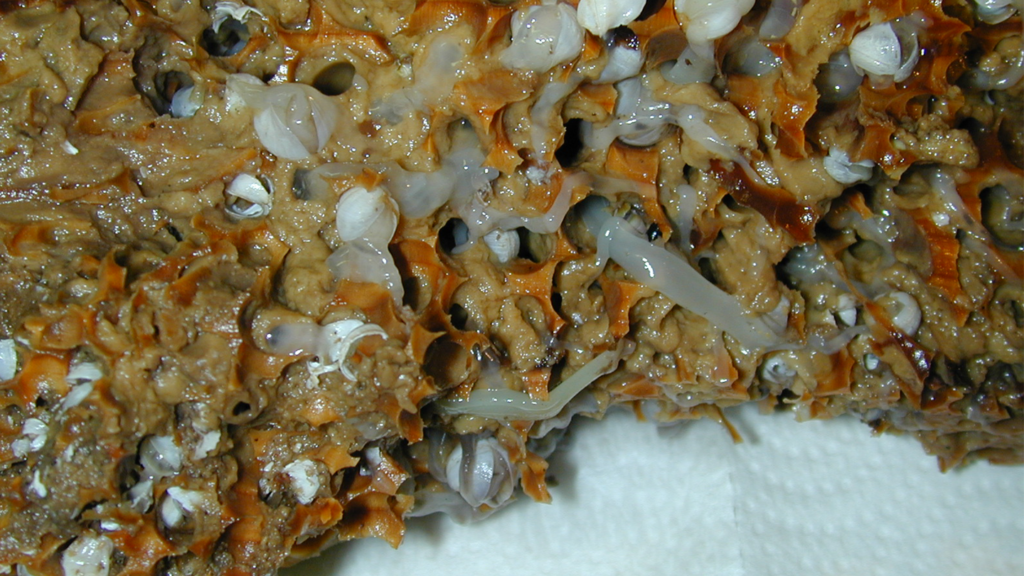When you think about animals digging in wood, clams are probably not the ones that show up. However, some clam species actually thrive on sunken pieces of wood at the bottom of the sea, according to a new study. The wood, either from fallen trees or from ships, is teeming with life and can give them a home and nutrients to live on. But the really gross part follows after that.

The researchers looked at how one group of wood-boring clams has evolved to build chimneys of their own poop. These clams, about the size of a pea, build the poopy structures as a way to ensure they get more of this marine wood for themselves. They dig into the wood, forming a borehole that then becomes both a source of food and a safe shelter.
“There are two challenges every sea creature has to face: getting pure water in, so you can get oxygen to your gills, and getting rid of your waste. Because nobody wants to live in their poop. But here are these clams living with theirs, and actually thriving,” Janet Voight, the study’s lead author and Field Museum curator, said in a statement.
While some of the wood on the seafloor can be packed with a wide array of animals, others pieces that researchers found were so gnawed on and chewed up that they crumbled when handled. The researchers wanted to figure out why this happens. After looking at the species of wood-boring claims present in wood samples from all over the world, they started noticing a pattern.
A very unusual set of clams
There are six branches in the wood-boring claim family three, but only one species was actually responsible for breaking the wood. “You just assume all wood-boring clam species bore into the wood the same way,” Voight said, who found the clams in the clade Xylophaga dorsalis were responsible for all the chewing and pooping. But they don’t.
Previous studies suggested that the chewed-up wood was because of warmer water or more larvae nearby. Now, this new study is suggesting the clams are the actual culprits. As they dig and move into the wood, they fill the space around them with their own feces. And they don’t do it on purpose, it’s just anatomical, Voight said.
As the shell digs in, the siphons (tubular body parts that take water to get oxygen and eject waste), stick out behind it. While most wood-boring clams have long siphons that stick out into the water, these clams have a shorter siphon that’s used to expel the de-oxygenated water and the feces actually stay inside the borehole.
The waste inside the clam forms a sort of fecal chimney that wraps around the siphon. It’s probably not the most hygienic way to live, but it doesn’t seem to save the clams from a lot of trouble they might run into otherwise. In fact, the poop chimney could actually serve as a signal for clam larvae to settle in the wood, the researchers hypothesized.
Aside from solving the mystery of the chewed-up wood, Voight said the study shows the importance of looking at ecology with an understanding of how different species are connected to each other, and why only this species behaves like this. When you’re confronted with something that seems enigmatic, sometimes you need to step back and look at the big picture, she concludes.
The study was published in the journal Marine Biodiversity.


